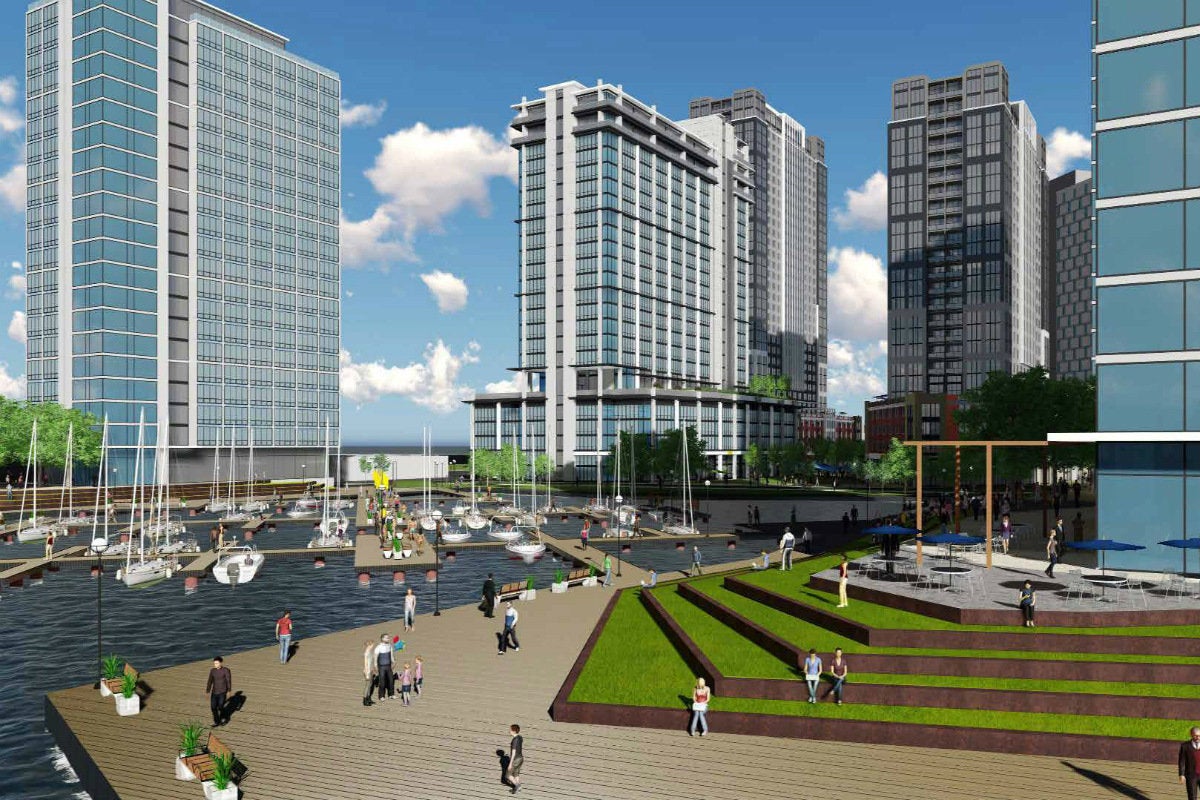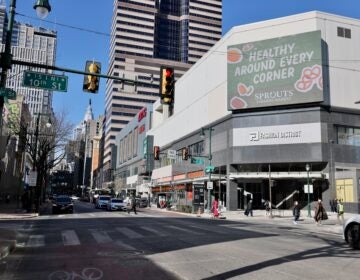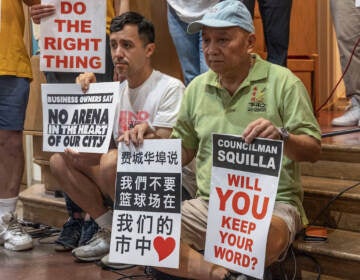Waterfront advocates push back on Squilla’s plan to increase height limit for Central Delaware development

The Delaware Waterfront has seen more than its share of beautifully rendered glassy towers with sweeping waterfront views, and heard many promises of thousands of new residents. Back in 2007 PlanPhilly reported, “Developers have drawn up designs for a veritable kingdom on the Delaware, pushing proposals for more than 20 new towers containing 5,000 condo units.” By 2013, none of these plans had been realized, thanks in no small part to the economic collapse of 2008.
But by 2013 something else had happened. A citizen-driven vision for the waterfront had led to the adoption of a new Master Plan for the Central Delaware, which mapped out the city’s priorities for waterfront development from Oregon to Allegheny. In June 2013, City Council passed a new zoning overlay for the waterfront, giving the 2012 master plan teeth.
In its purest legal sense the overlay is the plan, translating its principles and ideas into code and thereby guiding what can be built on the waterfront.
First District Councilman Mark Squilla now wants to change the Central Delaware Overlay (CDO) in ways that waterfront advocates and neighborhood groups argue would undermine the waterfront plan.
“The overlay is all that stands between the people of Philadelphia and the bad old days of no planning and transactional politics on our waterfront,” said Central Delaware Advocacy Group (CDAG) chair Matt Ruben to a packed community room at Society Hill Towers on Thursday evening.* Among the 50 or so people in attendance at Thursday’s board meeting were voting members of CDAG and residents of waterfront neighborhoods, drawn by questions about Councilman Squilla’s push to amend the Central Delaware Overlay before City Council’s summer recess.
The waterfront’s zoning overlay took more than two years to craft, and was the result of extensive compromise and discussion between Councilman Squilla, city planners, members of the development community, waterfront advocates, and property owners. It applies to most properties between Oregon and Allegheny avenues, and the pier head of the Delaware River and the east side of I-95. It requires things like “river access” streets and active uses on ground floors. The current overlay caps building height at 100 feet, but developers may earn the ability to build up to 244 feet by providing certain public benefits – including public art, constructing waterfront trail segments, building to LEED standards, or creating public spaces.
Councilman Squilla is currently advancing a bill to change this bonus structure, enabling developers to earn up to 316 feet in height by changing the bonus structure. His proposed changes are in large part to accommodate a developer’s 10-tower vision for a large parcel adjacent to the Sheet Metal Workers’ hall south of Washington Avenue. The changes would double the potential bonus for building public space and add a new height bonus for creating “through-block connections” to the waterfront.
CDAG professed its openness to discussing changes to the overlay, but the best way to do so, it argues, is not in haste. And not to enable a particular development proposal. While CDAG says it does not object in concept to increasing the overall height limit, the new bonuses for realizing that height are of concern.
The existing public space bonuses have not led to the creation of real public space, said Ruben pointing to One Water Street’s sloping landscaping as an example of the existing bonus’ failure. So why increase this bonus without tightening up how well the existing one works?
The through-block connections added to the overlay are minimally defined in Squilla’s draft bill, and CDAG worries that developers could given extra height in exchange for paltry public benefit, like building driveways that fail to connect to anything meaningful on the waterfront. Since the bill’s introduction in City Council on May 11, CDAG, Delaware River Waterfront Corporation (DRWC), and planning commission staff have met with Councilman Squilla to discuss ways to potentially improve his bill.
After a midday meeting Friday between CDAG, DRWC, planning staff, and Councilman Squilla, the councilman would only confirm that he is “still in talks with Planning and DRWC to see how we are going to work with the proposed amendments.”
“We are open to changes… if they are in keeping with the master plan and the principles of the master plan,” said DRWC planner Karen Thompson after the meeting Thursday evening. Negotiating things like height variation on larger sites, through-streets, and public space should be carefully considered, she said. Since the overlay has been in place for a few years, now might be an appropriate time to rethink how it is working. “We just want time to really think through it all. If it’s going to get changed, ideally it wouldn’t get changed again anytime soon. So let’s just do it right.”
Among CDAG’s voting delegates present on Thursday, there was unanimous support for asking the councilman to withdraw the bill.
“In helping the councilman make this a better bill, we’re undermining the process that should have gone on and rewarding something that could happen again, where we’re force-fed a bill and then we’ve got to scramble to beg him to pull it back and make it better,” said Rosanne Loesch, president of Society Hill Civic Association. “Details aside, the process flies in the face of this master plan process that was bottom-up, citizen-driven… We should not have to play this kind of game.”
Sean McMonagle, legislative assistant for Councilman Squilla, attended the CDAG meeting Thursday evening on the councilman’s behalf. (Squilla was attending a viewing after a Pennsport friend’s death.) McMonagle said he had not been briefed by the councilman prior to the meeting and repeatedly said he knew none of the reasons for the apparent urgency of passing this bill before City Council sessions stop in two weeks for summer. He also said he did not know if the councilman could be persuaded to hold or withdraw the legislation to afford more time for substantive dialogue and revision.
“This waterfront did not get planned for, and it’s not going to be built by, a handful of people,” said Phil Stoltzfus of the Olde Richmond Civic Association, imploring McMonagle to urge the councilman to take the long view. “Let’s not take shortcuts and let’s certainly not undo the work that’s been done.”
After the meeting, McMonagle told PlanPhilly the message of discontent from CDAG’s corner was received loud and clear, but what happens next is ultimately up to the councilman.
What immediately concerns CDAG is that time is tight. The bill is scheduled for a City Council Rules Committee hearing on Tuesday, June 13th.
“June 13th is High Noon,” Ruben told the room. “We have been urging the councilman to delay and hold this bill until the fall. Not so that we can obstruct and delay and be difficult but so that we can get the right language in to amend the [overlay] properly in a way that serves his stated goals and in a way that serves the goals of the master plan.”
*NOTE: Matt Ruben is a member of PlanPhilly’s community advisory committee.
WHYY is your source for fact-based, in-depth journalism and information. As a nonprofit organization, we rely on financial support from readers like you. Please give today.







